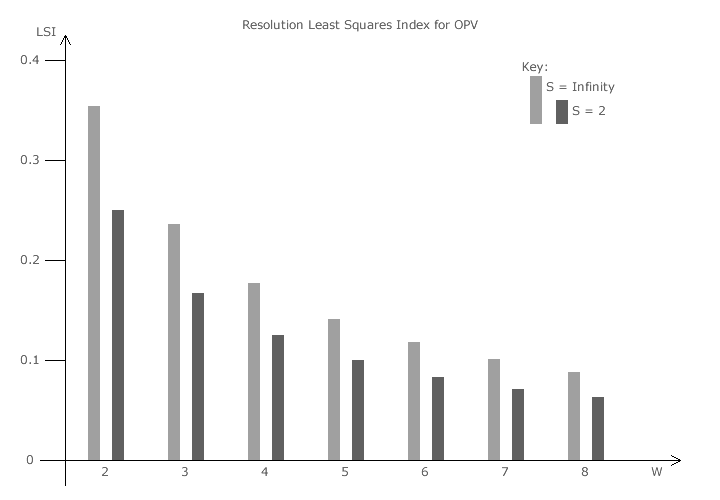Evaluations: Proportionality of CHPV 1
Disproportionality Index
For each party in any given multiple-winner election outcome, there will be a discrepancy between its share of the overall tally and its share of the elected seats. As stated earlier for OPV domains, one measure of the overall discrepancy is the sum of the magnitudes of the differences between the tally share and seat share for each party. Retaining the sign of each difference would result in a sum of zero for all eventualities as all the per-unit tally shares and all the per-unit seat shares must each sum to unity. Another useful and more popular measure of this discrepancy is called the Gallagher or Least Squares Index. It first squares each difference to yield only positive values and by this means removes its sign.

The Least Squares Index (LSI) is formally defined opposite. For each of the S parties the difference between its tally share (t) and its seat share (s) is first squared before these terms are then summed together. Finally, this sum is halved and then the square root is taken (to reverse the initial squaring). Both tally shares and seat shares range between 0 (no share) and 1 (whole share). In the worst (barely conceivable) case, one party would have no votes and all the seats, another would have all the votes and no seats and the remaining parties would have no votes and no seats. Therefore the sum of the squares of the differences would be (+1)2 + (-1)2 = 2. Hence, the scaling factor of 1/2 within the square root ensures that the LSI also ranges between 0 and 1. [This per-unit range is adopted here in preference to the standard percentage one.]
Disproportionality due to Seat Resolution
Even with an OPV system, there will be a discrepancy between votes cast and seats won simply because the number of winning candidates is generally a lot smaller than the number of voters. Some discrepancy is inevitable. With OPV, the worst case of disproportionality occurs when all parties tie for the last remaining vacant seat. The LSI for this extreme scenario in an S-party W-winner election is given opposite. The number of parties (S) has a small scaling effect on this LSI ranging from (1/2)/W for S = 2 to (1/√2)/W for S = ∞. However, the LSI is inversely proportional to the number of seats (LSI ∝ 1/W). It is only to be expected that as the number of seats rises, proportionality improves. In other words, as seat resolution increases, the worst case LSIRES for OPV declines. The bar chart below illustrates the improvement in the resolution LSI for OPV as the number of available seats (W) increases. The number of parties has only a small effect on the worst case LSIRES so only the two extreme values (S = ∞ and S = 2) are plotted for OPV.

Proceed to next page > Evaluations: Proportionality 2
Return to previous page > Evaluations: Party Cloning 2

